In 2012, I spent a summer in Brighton, UK, teaching English in a small scale language school with bags of charm but ageing resources. My class was filled with about ten 16 year olds, real cool kids away from home for a summer of language learning, beach-side romance and a few adventures to carry back to their respective homelands.
One afternoon we went to the attic room to use the listening suite. There was a vast collection of audio cassette and VCR tapes, but not a CD nor DVD to be seen.
Their desks were all fitted with embedded tape players, with individual headphone sets and audio control buttons. They had free roam of the wonderfully categorized shelves of materials, and as this lesson required no planning, I was expecting to be able to fill the time with reading while I casually supervised their progress. I was wrong.
Within a few minutes, hands were being raised and I was being told about the same problem.
“Sir, my player’s broken”.
I’d walk over, check the tape, and see that whoever had used it previously had failed to rewind it. I’d put the tape in and ask the students to rewind. They would hit the ‘skip back’ button. Nothing would happen, so they’d assume it was still broken.
It dawned on me; these teenagers had never used tape players in their life! In fact, their understanding of that technology was so absent, they believed it was possible to actually skip tracks in a way similar to CDs!
Those teenagers were digital natives. To them, the symbols on a laptop, TV, iPhone were all invented purely for those devices. I felt pity for them, but then realised for myself how I had done much the same thing when I was a child. Did I truly know the history of the symbols I saw every day? Had my grandmother laughed when I didn’t recognise the ‘L’ in the £ sign? Did my Science teacher chuckle at the fact I didn’t recognise Norse History on my telephone keypad?
I had to know more, so here is the Itchy Quill History lesson on some famous symbols and their origins!
What do London, the & symbol and the £ sign have in common? Yes, they are all very popular in England, but more importantly, they were all invented by Romans. Ok, ok, So you can’t invent a city, but London, or rather Londinium, was a very successful experiment in replicating traditional Roman methods of living, but overseas. All three were also opportunities for ancient Romans to demonstrate their remarkable skill in design, ingenuity and style.
See, the ampersand is essentially a highly stylized version of the Latin word for and, Et, invented by a fellow named Marcus Tullius Tiro. He didn’t give it the catchy name however, you can blame the true lovers of Latin – Victorian school children – for that. In the time of Queen Victoria, the symbol was essentially treated as the 27th letter of the alphabet. Children would chant the alphabet through rote learning with the ending being “and per se and”. This literally translates as ‘and, in itself, and’. Children being children, they couldn’t wait to finish the chant and be the first one to get to the jelly and custard at break time, and so the words ended up blending together to make ampersand.
As for the £ sign, that little guy is essentially just a fancy pants ‘L’. Those of us born in modern times will find it harder to recognise, as practising this style, known as roundhand, becomes less and less promoted in schools. Why L? Well, it’s down to those Romans again. They had a unit of weight called the ‘libre’, and the £ sign is merely an abbreviation (which is the reason for the one or sometimes two dashes across the middle of the £). Interestingly, the libre is also the namesake of the lb measurement of weight too.
So, Ancient Rome… not just nudity, baths and hedonism.
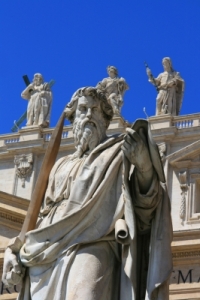
Boy, us Romans invented most of this puny language you call ‘English’. We smite you with Latin – basiate culos meos!
We’ve all stared at it knowingly for years, touched it on countless instruments, but never truly known what it means. In truth it’s a symbol from when coding was in its formative years. As far back as WW2, this symbol was used to demonstrate in binary the presence or absence of power; 1 (the line) means on, 0 means off.
However, sometimes there can be a line within an unbroken 0 ![]() which means a single switch can move an instrument from on to off, and vice versa. There can also be a 0 broken by a line
which means a single switch can move an instrument from on to off, and vice versa. There can also be a 0 broken by a line ![]() which represents that something can be turned off, but not disconnected from the power source completely.
which represents that something can be turned off, but not disconnected from the power source completely.
The dollar bill, a beacon of the American Dream, is arguably one of the best recognised currencies in the world. In parts of SE Asia and South America, dollar bills can actually be used as a de facto currency, meaning black markets exist for travellers who never need to change into the local money from USD, as the value of an American Dollar is so robust. So, where does this wonderful bastion of autonomy come from?
There are various theories to choose from, but the most widely accepted seems to be that it is an offspring of the Spanish Peso. In the 1700s, the Peso – “peso de ocho reales” or ‘pieces of eight’ – was the common currency of the Americas. PS was the abbreviation, and it is thought that over time the S and P would be placed on top of each other, forming an early ancestor of the $. This seems to fit the time line, as it was evident on the first paper bills printed by the US in 1875.
Those feeling curious are free to check Ayn Rand’s alternative idea, that the $ sign is a combination of the initials of U and S from USA, with the bottom of the U being cut off. ![]()
He’s not just a menace to the Gauls; the asterisk has a history that goes back as far as the Middle Ages. Original employed with its best friend the dagger (†) as two of the first proof-reading marks, largely from need for the scholars tasked with editing Homer’s poetry epics. Ask an Athenian though, and they may tell you it comes from the Greek word asteri, meaning star.
In literary terms, it fell out of favour largely until the twentieth century, utilised to great effect solo to demonstrate the insertion of a footnote, or as a trio to break text into sections.
In modern times, it can literally mean anything. A pro athlete never wants one of these next to their name as it can signify a win under controversial or conditional circumstances, or in some biographies it can mean the year of birth (*1969). On the number key of your keyboard it could be a replacement for × (multiply), a mask for expletives in t*ts and s**t, and it can even be used to denote a *snigger* or a *gasp* on twitter. Whatever it’s use, the asterisk is a real chameleon of the symbol jungle, and it deserves a place in our hearts.
Bluetooth
What do wireless devices syncing together and medieval Scandinavia have in common? No, it’s not a thirst for pillaging and decimation; it’s actually quite the opposite.
Harald Bluetooth was the Viking king of Denmark from 958 to 970, and famous lover of Blueberry’s (hence the blue teeth). He is best remembered for uniting parts of Norway and Denmark into one country, and converting them to Christianity. See Harald was a man famous for bringing people together.
In the early 90s, when various different technology sectors were developing their own systems, it was assumed by some designers that this difference would vastly impede wireless compatibility across them. Jim Kardach was one such designer. Inspired by Harald, who he viewed as a perfect symbol for bringing together rival parties, he was able to help mediate between the various interested bodies and from this the Bluetooth Special Interest Group was born.
Think it stops there? It’s Harald’s name in ancient rune form that actually makes up the official Bluetooth logo!
The at sign
Few can imagine a world without it now, as it stands as the posterboy of modern communication; the twitter handle’s opening character, the link between username and domain on any email address. Alas, there was a time when this inescapable symbol was just a forgotten key stuck in obscurity on old typewriters.
The true origins are somewhat of a mystery, though many can agree that it came to prominent use as a symbol for ‘at the rate of’ in commerce, as in ’20 chickens at £1″ (its crucial meaning being demonstrated by the fact the total there would be £20).
It wasn’t until 1971 and the advent of the forerunner to email, that ‘The snail” (as the Italians called it) came into a new age of importance. Ray Tomlinson, a computer scientist at BNN (the company tasked by the American government with creating Arpanet – the precursor to the internet) sent a message to himself from one computer to another, and saved the @ sign from disappearing into symbolic and literal obscurity.

Make sure to take regular breaks from the screen to avoid hallucinations and Tron-esque out of body experiences
The Hash
And here we are – the symbol of our time. Has any symbol found itself more crucial to our technological strides, not just once but twice in modern history? Initially one of only two symbols chosen for dial tone phones to make the new keypads more symmetrical, it later entered the public psyche via Twitter in 2007 to demonstrate a trend or topic. As my friend recently noted, “it’s the only thing that’s always trending”.
Most of us know it now as the hash sign, but its actual name is The Octothorpe, giving it the air of a superhero. Those etymologists among us will recognise that octo means eight. A quick count and you can see we are looking at only six points, but that’s not the only mystery. See, some claim that the thorpe part means ‘farm’ in Old Norse, and that # would indicate a village on old maps. To this day, the symbol can mean a lumber yard on Swedish maps. It can also be used in proof-reading to signify a space should be inserted, and it can even mean a checkmate in chess!
If that wasn’t enough, a similar incarnation would be adopted by the Romans (them again) as another symbol for pound (bringing the total to, yes, three different symbols for pound)!
What symbols do you think are missing from this list? Do you feel aggravated that I didn’t include the Neptune inspired USB logo? Perhaps you cannot contain your rage at the non-inclusion of the question mark? There are many websites out there with information on the history of symbols, Gizmodo being one of my favourites.
The point here was never to give a definitive answer to all and every, but to instead give you the clip notes of some of the symbols we see everyday. The ingenuity, intelligence and history that is behind each of these could fascinate. I’d like to know what you think.
Going Obsolete – Help a Little
Going Obsolete – Learning Never Stops
Going Obsolete – Sweat, Tears and Digital Ink
Going Obsolete – My Little Avalon
Special thanks to AKARAKINGDOMS, digitalart, Iamnee, iprostocks, jscreationzs, Pixomar, Simon Howden, stockimages, Stuart Miles, vectorolie, imagerymajestic and patrisyu @ FreeDigitalPhotos.net for use of their photos in this blog.
© Itchy Quill and ItchyQuill.WordPress.com, 2015


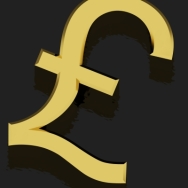


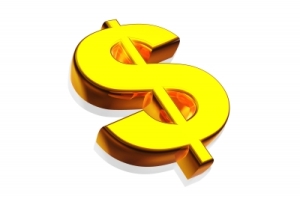
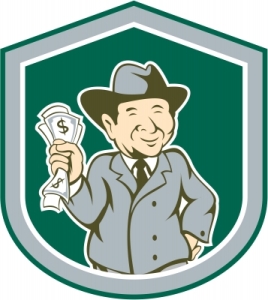


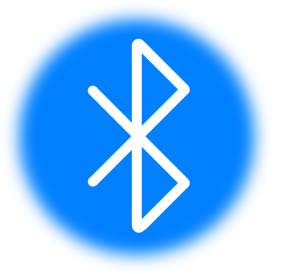
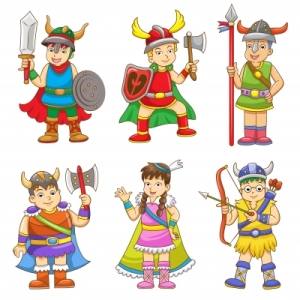


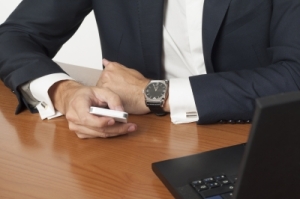
This is so interesting. They are something you don’t think twice about!
LikeLiked by 1 person
I’m just taking inspiration from all the wonderful information on your fantastic blog! 🙂
LikeLiked by 1 person
fascinating reading, and good reseach – I’m a fan!
LikeLiked by 1 person
Awesome post. I have a friend who has been teaching English in Korea for the last four or five years now. She’s finally coming home this year, I believe.
LikeLiked by 1 person
That’s good news, she will hopefully have a ton of stories of her own!
LikeLike
My god! So much of history behind the $¥MBo£$??
LikeLiked by 2 people
Haha, yeah I know it’s crazy isn’t it?!
LikeLiked by 1 person
It is real interesting 🙂 Thanks to your patient research!
LikeLiked by 1 person
Love the anecdote about your students and the tape players. I’ve had similar situations in my classroom. It is amazing how things change. Great post! I loved all the information about these common symbols. What to take the prompt and make it your own!
LikeLiked by 1 person
Thanks a bunch. I’d love to hear some of the stories from your classroom
LikeLiked by 1 person
That’s amazing! I was always using these symbols on a daily basis without even thinking about their origin 🙂 my husband works in electronics industry, discussing production of tabs with (of course) Bluetooth as one of the features and he had no clue where the sign came from. He congratulated me on ‘outgeeking’ a geek :))
LikeLiked by 1 person
That’s great to hear, I’m glad you were able to win the geek-off! 🙂 A lot of this information blew my mind when I found it. Thanks for the reblog too! 🙂
LikeLiked by 2 people
Welcome and thanks again 😉
LikeLike
Reblogged this on tinyexpats and commented:
This post is not about expat, kids or travel, but it’s so interesting! Did you know where @ and # came from? These and many other symbols explained.
LikeLiked by 2 people
Thanks for this. I NEVER could figure out the on/off switch for power on or off when my work printer messed up. Bravo. Well done. Can you do a post on the signs women send men? 🙂
LikeLiked by 1 person
If only it were that easy! We used to have a work printer that jammed every time. I think we ended up destroying it Office Space style…
LikeLike
Throughly enjoyed it. Its this kind of little tidbits that I will bring up when talking to my brother and he will undoubtedly say: “Are you making s**t up?
LikeLiked by 1 person
Haha! Your brother and my sister have that in common!
LikeLiked by 1 person
Very well done. I liked reading about some of these symbols. Can’t wait to use it at the next dinner party! Regards, eLFy 🙂
LikeLiked by 1 person
wow! awesome!
LikeLiked by 1 person
Great post! The story at the beginning reminded me of listening to Maroon 5’s song Payphone with my son. The lyrics include, “‘I’m at a payphone trying to call home. All of my change I spent on you,” My son asked me, “Why is he out of change?”…I realized he had grown up in the age of cell phones and had no idea how one uses a payphone!
LikeLiked by 1 person
Haha, that’s exactly what it felt like! Did he understand the concept in the end?
LikeLiked by 1 person
Yes, in the end he got the concept…but it took a while!
LikeLiked by 1 person
That was great. I do love learning the history behind each symbol and the bit about the kids in the beginning was awesome.
LikeLiked by 1 person
Thanks for taking a look Rachelle!
LikeLiked by 1 person
This post is highly engaging! The story you began with was thought-provoking by itself….But then you took us with you on a ride to learn some history behind these popular symbols. It’s easy to think of current technology as something that springs forth on its own, without parents, precedents! Your piece helps to rein-in that type of thinking.
LikeLiked by 1 person
Thanks for the feedback Leslie! I was fascinated by the history of it all. I love that these tools have their own story, and I wanted to share that
LikeLike
I found this so f***ing entertaining I can’t even tell you. The power sign has always reminded me of someone giving the finger.
LikeLiked by 1 person
Haha, I never noticed that before! Now I can’t unsee it 🙂
LikeLike
What an interesting read! I never knew this. And kudos to you for this research. You have PATIENCE.
LikeLiked by 1 person
Just nominated you for the Real Neat blog award https://randomwordstorm.wordpress.com/2015/01/22/real-neat-blog-awardyayyy/ 🙂
LikeLiked by 1 person
Thanks a lot, that’s very kind of you! 🙂
LikeLiked by 1 person
Good Research 🙂 Now i follow you Hi, I am a blogger from BT.X You follow us 9 days ago. I want to know what did you like in our blog? Do you want us to add more things like that? What would you like to improve in our blog?
LikeLike
I just really like the way stuff is presented and the topics covered. I started following you because I imagined I would like your future posts, and having checked today I know I was right 🙂 I like it how it is, though it doesn’t all fit on one web page. You’ve got so much going on, it’s no wonder! 🙂
LikeLiked by 1 person
Tks. Will you want me to write more about a specific topic? Tell me which one?
LikeLike
It’s nice that you ask my opinion, but I honestly do not know! I quite enjoy browsing the blog and seeing what’s on there. Surprise me! 🙂
LikeLike
Ok. 😉👍😅👌
LikeLiked by 1 person
So interesting! 🙂
LikeLiked by 1 person
Cool stuff…especially the blue tooth.
BE
LikeLiked by 1 person
Thanks 🙂
LikeLiked by 1 person
Oh wow, I picked up some great nuggets on your post. I really enjoyed it!
Happy trails
Donna George
LikeLiked by 1 person
Good post— Didn’t know the history of All the symbols.
LikeLiked by 1 person
How come I just found this great read now? First of all I really liked how you infused humor in your intro. I was reminded about the time I would manually rewind (with the use of fingers) the cassette and VHS tapes when I was a kid. 🙂
Secondly, the post was very informative and it was such wickedly brilliant. Thirdly, never stop writing and imparting knowledge because you never know when you are actually making a profound influence in someones life through your words. God bless Toby!
-Abbie x
LikeLiked by 1 person
Wow, so many kind words! Thanks for the feedback Abbie. I remember the constant fear that the machine would chew the tapes up 🙂 I completely agree with the idea everyone should keep writing and imparting their experiences for the enrichment of the world! Thanks for taking the time to comment 🙂
LikeLiked by 1 person
Bloody nora I have feared that too and it happened to me quite a lot. I liked placing the tape in a rewinder machine simply because I love the sound it makes haha 🙂 I still have my Titanic and Lion King tapes. You’re most welcome. Looking forward to reading more of your posts. Stay blessed Toby 🙂
LikeLiked by 1 person
Haha, I think I still have mine too! 🙂
LikeLiked by 1 person
Hooray! Haha got to love the classics 😉
LikeLiked by 1 person
Fascinating post! So informative! (See all those exclamation marks? 😀 ) You’ve gotten me intrigued. *admiration* I’m your new Follower. 😉
LikeLiked by 1 person
Haha, excellent use of * and !s. Thanks for taking the time to check me out 🙂
LikeLiked by 1 person
I had a wonderful experience reading this.
LikeLiked by 1 person
I’m glad! I had a wonderful experience writing it 🙂
LikeLiked by 1 person
I love this post! I will be using it with my students who actually get a kick out of suddenly understanding why they use things and where they came from. Thanks for putting it all together so coherently. 🙂
LikeLike
Glad to hear you found it useful! There’s plenty more where this one came from 🙂
LikeLiked by 1 person
Pingback: Itchy Quill | Indonesia Beckons
Pingback: the milk man cometh | eastelmhurst.a.go.go
Pingback: Itchy Quill | Why Blogger? 14 Reasons Why You Should Blog!